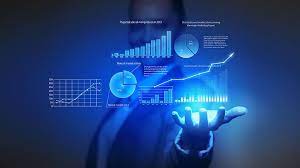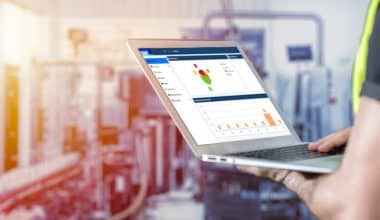The number of tools for data analysis is expanding as the discipline of data analytics develops. If you’re thinking about working in this industry, you should read every bit of this article. We’ll discuss some of the most important data analytical tools in this article, along with their benefits. You’ll receive a brief description of each, outlining its uses, benefits, and drawbacks, for both open-source tools and for-profit software.
What is an Analytical Tool
Analytical tools refer to the tools that enable access to data for research and evaluation purposes, including but not limited to dashboards, a query builder, summaries of important student and employment outcomes, and a research library, which may include the P20W data set.
Analytical Tools for Business
In order to evaluate and analyze data, business analytics solutions gather it from one or more business systems and consolidate it in a repository, such as a data warehouse. The majority of businesses employ a variety of analytics tools, including sophisticated data mining programs, spreadsheets with statistical features, and predictive modeling programs.
Together, these business analytics tools give the organization a comprehensive picture of the business, revealing crucial insights and comprehension of the industry, and enabling the organization to make more informed decisions about business operations, customer conversions, and other matters.
Tools for Business Analysis:
#1. SWOT Evaluation
A SWOT analysis is a set of techniques used to look at both internal and external elements that have an impact on a company’s success. Prior to the company launching any new plans, particularly strategic marketing plans, this study is typically conducted in the early stages. Strengths, weaknesses, opportunities, and threats are the four contributing factors in this study that must be looked at in order to finish it. Strengths and weaknesses among them refer to any factors that are internal to and under the control of a corporation; for this reason, they are also known as internal factors. Comparative analysis, on the other hand, focuses on analyzing external elements. These elements are then divided into enterprise opportunities and threats.
#2. PEST Evaluation
This analysis of PEST, which stands for Political, Economic, Sociological, and Technological, is an approach to examining how external factors affect an enterprise’s performance. Business owners are given a variety of external aspects to consider during the analysis process that has an impact on their companies both directly and indirectly.
#3. MOST Evaluation
This approach is appropriate for any business wishing to do internal analysis because it gives the owners the assurance that they are following the right pattern. Mission, Objectives, Strategies, and Tactics are abbreviated as MOST. The company must specify where it wants to go, what goals it must attain to carry out its mission, the specifics of its plan, and how it will carry them out.
#4. Heptalysis
This approach analyses key aspects of a business initiative at the outset of the evaluation process. Market opportunity, product or solution, execution strategy, financial engine, human capital, prospective return, and margin of safety are the seven core factors that make up this analysis.
Data Analytical Tools
We’ll begin our list with the absolute necessities—the data analysis tools you need to have. Then, we’ll move on to some of the more well-liked products and platforms utilized by both large and small enterprises.
#1. Use Excel
Excel in a nutshell:
- Software for spreadsheets, type of utility.
- Availability: Business.
- Reporting and data wrangling are the two main uses.
- Pros: It’s widely used and has a ton of helpful plug-ins.
- Cons: Expensive, computation errors, and poor huge data management.
The most well-known spreadsheet program is Excel. It also has computation and graphing features that are excellent for data analysis. No matter your area of expertise or additional software you might want, Excel is a standard in the industry. Its useful built-in features include form design tools and pivot tables (for sorting or tallying data). It also provides a wide range of additional features that simplify data manipulation. For instance, you can merge text, numbers, and dates into a single cell with the CONCATENATE function. Excel’s search feature makes it simple to isolate particular data, and SUMIF enables you to build value totals based on flexible criteria.
#2. Python
In a nutshell:
- The language used for programming.
- Open-source and thousands of free libraries are available.
- Everything from data scraping to analysis and reporting is done using it.
- Pros: Simple to learn, very adaptable, and extensively used.
- Cons: Memory-intensive; not as quick as some other languages to execute
Python is an essential tool for every data analyst and has a wide range of applications. It places a higher priority on readability than more sophisticated languages, and because of its widespread use in the computer industry, many programmers are already familiar with it. Additionally, Python is incredibly adaptable, with a vast selection of resource libraries suitable for a wide range of diverse data analytics jobs. For instance, the NumPy and pandas libraries are excellent for supporting general data processing as well as streamlining highly computational workloads.
#3. Jupyter Notebook
Overview of Jupyter Notebook:
- Interactive authoring software is this type of tool.
- Availability: Open-source.
- Common uses include sharing code, developing tutorials, and showcasing work.
- Pros: Excellent for displaying; independent of language.
- Cons: Not very self-contained or conducive to teamwork.
An open-source web program called Jupyter Notebook enables you to create interactive documents. These incorporate narrative text, equations, live programming, and visualizations. Think of something that resembles a Microsoft Word page but is far more interactive and tailored for data analytics! It’s an excellent tool for displaying work as a data analytics tool: Over 40 languages, including Python and R, is supported by Jupyter Notebook, which runs in the browser. It also offers a variety of outputs, including HTML, photos, videos, and more, and connects with large data analysis tools like Apache Spark (see below).
#4. Apache Spark
A quick summary of Apache Spark
- Framework for data processing, type of tool.
- Availability: Open-source.
- Big data processing and machine learning are the two main uses.
- Pros: Quick, dynamic, and simple to use.
- Cons: Strict user interface and lack of a file management mechanism.
With the use of the software architecture Apache Spark, data scientists and analysts can quickly analyze enormous data volumes. It was initially created in 2012 and then donated to the charitable Apache Software Foundation. Spark is a distributed analytics framework created to examine unstructured large-scale data sets. While there are other frameworks that are similar (like Apache Hadoop), Spark is incredibly quick. It is approximately 100 times quicker than Hadoop since it uses RAM rather than local memory. It is therefore frequently employed in the creation of machine learning models that require a lot of data.
#5. Microsoft Power BI
Power BI in a nutshell:
- A suite of business analytics tools.
- Software that is available for purchase (with a free version).
- Most frequently used for Predictive analytics and data visualization.
- Pros: Excellent data connectivity, consistent updates, and effective visualizations.
- Cons: Limited data (in the free version), strict formulas, and a clunky user interface.
Power BI is a relative newcomer to the market for data analytics solutions with a lifespan of fewer than ten years. It was first developed as an Excel plug-in but was later updated as a standalone suite of corporate data analysis tools in the early 2010s. With a short learning curve, Power BI users can easily build interactive visual reports and dashboards. Its strong data integration is its key selling point; it works well with cloud sources like Google and Facebook analytics as well as text files, SQL servers, and Excel (as you might expect from a Microsoft product).
#8. Tableau
Quick overview of Tableau:
- Tool of this kind: one for data visualization.
- Availability: Commercial.
- Creating data dashboards and worksheets is what it is mostly used for.
- Pros: Quickness, interaction, and support for mobile devices.
- Cons: Lack of data pre-processing and poor version control.
One of the best commercial data analysis tools is Tableau, which allows you to build interactive visualizations and dashboards without needing to have a deep understanding of programming. The suite is incredibly user-friendly and handles massive volumes of data better than many other BI tools. Its visual drag-and-drop interface is yet another feature that sets it apart from many other data analysis tools. However,
#9. KNIME
In a nutshell:
- Data integration platform, type of tool.
- Availability: Open-source.
- Data mining and machine learning are the two main uses.
- Pros: Open-source platform is excellent for programming that is driven by visuals.
- Cons: Not scalable, and several functions require technical know-how.
KNIME (Konstanz Information Miner), an open-source, cloud-based data integration platform, is the last on our list. Software engineers from Konstanz University in Germany created it in 2004. Although KNIME was initially developed for the pharmaceutical sector, its ability to compile data from several sources into a single system has led to its use in other fields. These consist of machine learning, business intelligence, and consumer analysis.
The reason Sprout Social is ranked first on our list is because of the demand for cross-channel social media analytics.
Sprout has you covered whether you want to rapidly compare results across numerous networks at once or dig deeply into your performance on a single network.
Sprout includes templated and customizable reporting options, giving you a variety of ways to not only collect crucial social data but also comprehend what they represent and communicate them to others while excluding irrelevant metrics and decreasing noise.
#2. HubSpot
The analytical tools provided by HubSpot allow you to link social media performance to increased sales and business. You can report on the success of your social strategy across all channels whether you produce content directly through HubSpot, through other platforms, or while you’re on the move. To gauge the success of a campaign, you may also contrast the performance of several social media platforms.
#3. BuzzSumo
BuzzSumo is a fantastic tool for examining the social interaction of any given piece of information, despite not being a social media platform in the traditional sense.
This tool can show you the number of shares your most recent blog article received on Facebook, Twitter, and Pinterest. In order to assess how your content marketing strategies compare to the competition, you can also track the performance of content that is competing for relevant industry keywords.
#4. Curalate
Companies aiming to increase their Instagram sales can use platforms like Curalate as a hybrid storefront and analytics tool. You’ve probably come across a “Like2Buy” link in the wild, whether it was branded or not. Look at Curalate’s Instagram bio to see how big businesses like Bose use it for social sales.
#5. Figure
A real-time performance analysis of the sector- and campaign-specific hashtags on Twitter and Instagram is offered by tools like Keyhole. By doing this, firms may advertise during busy periods and learn which hashtags are most popular with their followers.
#6. SHIELD App.
LinkedIn is receiving an increasing amount of attention from B2B marketers as it is the source of 80% of their social leads. Meanwhile, given the growing demand for employee advocacy, organizations should also be monitoring each salesperson’s profile on LinkedIn in addition to their company page.
The gap is being closed by emerging social media analytics solutions like SHIELD. For instance, SHIELD evaluates the effectiveness of each employee’s profile and posts. Employees can tweak their posts before sharing to increase their reach by using content metrics, such as average likes, comments, and hashtags.
Marketing Analytical Tools
We must comprehend the domains in which these tools can be useful if we are to comprehend the significance of marketing analytical tools. Marketing analytics come in a variety of forms.
#1. Improvado
Improvadois an enterprise-grade marketing analytics platform that streamlines further study of your marketing, sales, and revenue data by automating data collection and transformation. The platform facilitates the entire pipeline of marketing data.
#2. Whatagraph
With the help of the marketing reporting tool Whatagraph, you may compile useful reports from a variety of data sources. Whatagraph’s two main user demographics are as follows. The first category consists of marketing firms that manage numerous accounts for each client. They can connect these data sources with Whatagraph to produce the report. The report can be automated to automatically send out new data at predetermined intervals after it has been prepared. On this basis, agencies might reduce the weekly hours spent on report development for each customer.
#3. Domo
Domo is an analytics tool with a focus on data visualization and business intelligence.
The Domo platform is ideal for C-level executives employed by large corporations that want to use a non-marketing-specific BI tool that can produce executive-level dashboards throughout the firm. Data from marketing initiatives are not Domo’s main focus. This indicates that while the program has a sizable capacity for executive dashboards and company-wide business information, it is probably not the ideal option for the collection and visualization of marketing data. The platform is too expensive for use by the marketing department alone because connectors don’t extend as deep and marketing integrations are less extensive.
#4.Funnel.io
Funnel.io is a marketing analytics platform that streamlines marketing reporting and analysis by automating data collection, transformation, and loading. More than 500 apps and platforms, including CRMs, eCommerce, email marketing platforms, and others, are integrated with the program. Users can do automated data categorization, modify the frequency of imports and exports, and change raw data using Funnel.io.
What are the 5 categories of Analytical Tools?
- Prescriptive,
- Predictive,
- Diagnostic,
- Descriptive,
- and Cognitive
Is Excel an Analytical Tool?
One of the most used programs for data analysis is Microsoft Excel. They are without a doubt the most sought-after analytical tool available since they include built-in pivot tables. You can simply import, browse, clean, analyze, and visualize your data using this all-in-one data management tool.
Is SPSS a Data Analysis Tool?
Data analysis for descriptive and bivariate statistics, numerical outcome forecasts, and predictions for group identification are all provided by SPSS. Additionally, the software offers graphing, direct marketing, and data transformation functions.
What is the most commonly used Analytical Tool?
The most popular tool for working with spreadsheets and creating analyses is Microsoft Excel.
What is an Analytical Tool and Method?
Analytical Tools refer to the tools that enable access to data for research and evaluation purposes, including but not limited to dashboards, a query builder, summaries of important student and employment outcomes, and a research library, which may include the P20W data set.
What are 3 Common Analytical Techniques?
- Analysis of regression.
- Monte Carlo modeling.
- Factor evaluation
How do I Choose an Analytical Tool?
- Business goals. Your analytics platform should serve both your current and future business requirements, just like any other IT investment.
- Pricing,
- User Interface and Visualization,
- Advanced Analytics, and Pricing.
- Integration, Mobility,
- Agility and Scalability,.
- Multiple Data Sources.
Conclusion
Threats to data security exist for all firms. By analyzing and visualizing pertinent data, organizations can employ data analytics to determine the root causes of previous data breaches. For instance, the IT division can employ data analytics programs to analyze, analyze, and visualize audit logs in order to pinpoint an attack’s path and point of origin. IT can use this information to find vulnerabilities and patch them.
Related Articles
- BEST 10 WORKFLOW MANAGEMENT SYSTEMS: 2023 Reviews
- What Are Analytical Skills? Examples and Tips
- TOOLS FOR BUSINESS: How It Works and Free Tools For Business
- BUSINESS INTELLIGENCE TOOLS: Meaning, Best Tools, And Guide
- EASIEST BUSINESS CREDIT CARD TO GET: Top Credit Cards for New Business, With Bad Credit & No Personal Guarantee
- REFUNDABLE TAX CREDITS: Definition, Differences & Complete Guide
- LAWYER CONSULTATION: Finding Free Legal Help Online






